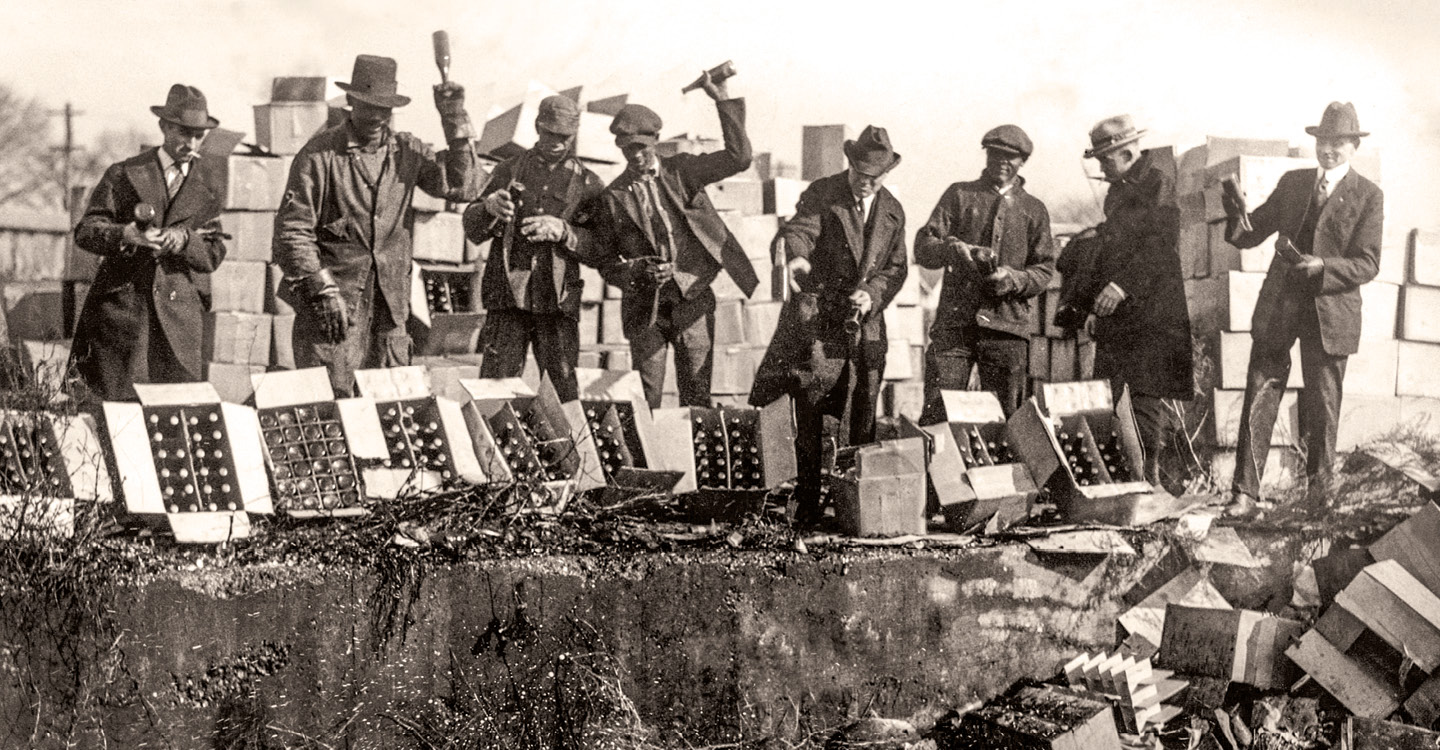It was January 16, 1920, and the streets of San Francisco were crowded with trucks and wagons delivering crates of liquor to people’s homes. In Atlantic City, New Jersey, bars were giving away milk bottles filled with alcohol to customers as souvenirs. And every café, restaurant, and hotel in New York City was jam-packed with people clinking glasses.
“There were so many corks popping, it sounded like artillery fire,” says historian David Wondrich.
The reason for the commotion: It was the last call for alcohol. At one minute past midnight, Prohibition would take effect, by a constitutional amendment, making it illegal to sell intoxicating liquors anywhere in the United States.
Dubbed the “noble experiment,” Prohibition was intended to solve the social ills of the day. Instead, it led to a whole new set of problems—fueling the rise of organized crime, corrupting public officials, and creating a nation of lawbreakers.
It was January 16, 1920. The streets of San Francisco were crowded with trucks and wagons delivering crates of liquor to people’s homes. In Atlantic City, New Jersey, bars were giving away milk bottles filled with alcohol to customers as souvenirs. And every café, restaurant, and hotel in New York City was jam-packed with people clinking glasses.
“There were so many corks popping, it sounded like artillery fire,” says historian David Wondrich.
What was behind all the commotion? It was the last call for alcohol. At one minute past midnight, Prohibition would take effect. This constitutional amendment made it illegal to sell intoxicating liquors anywhere in the United States.
Dubbed the “noble experiment,” Prohibition was intended to solve the social ills of the day. Instead, it led to a whole new set of problems. It fueled the rise of organized crime and corrupt public officials. It also created a nation of lawbreakers.

